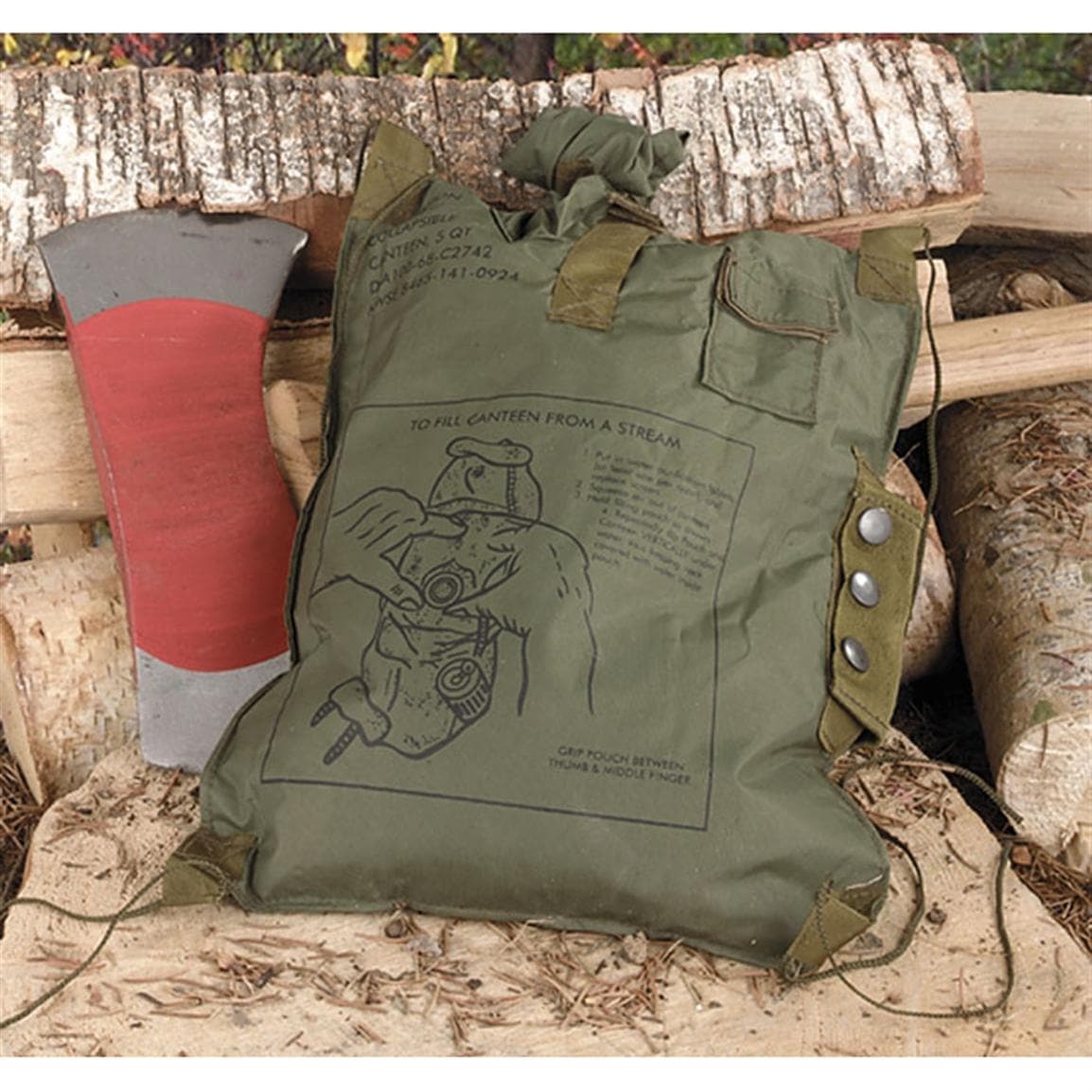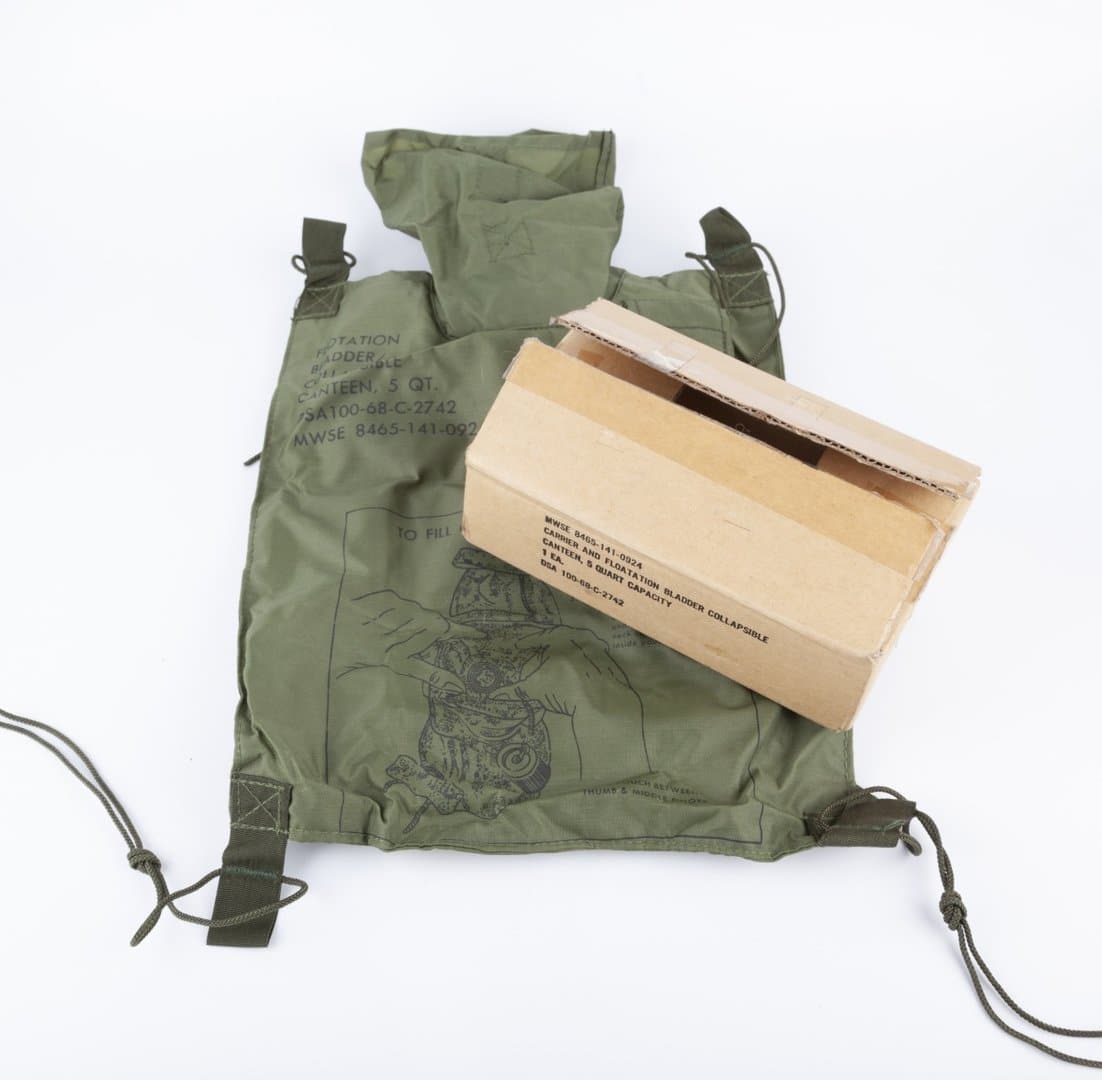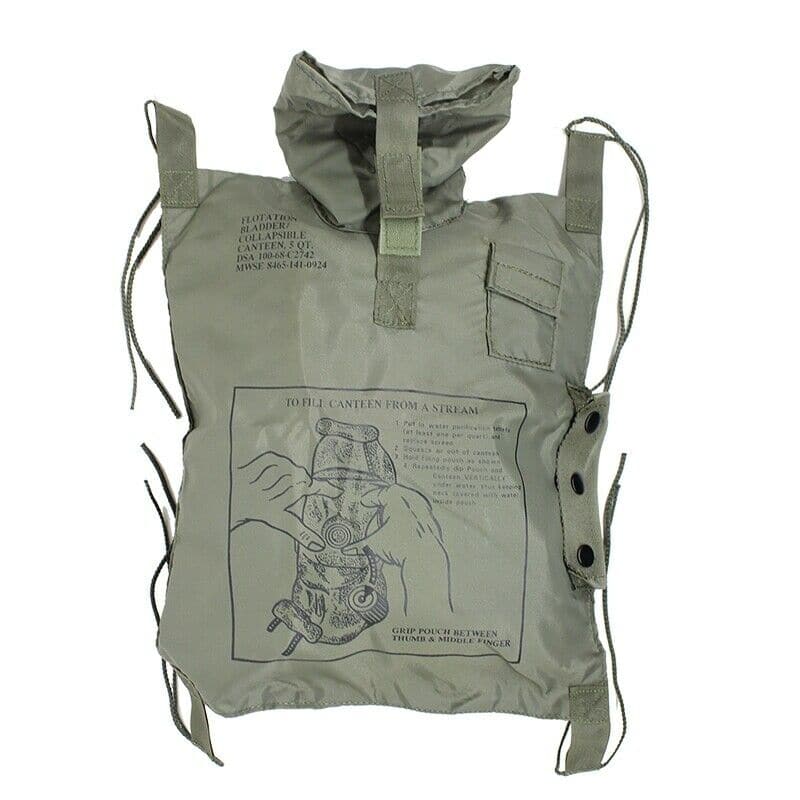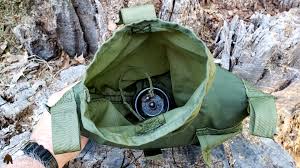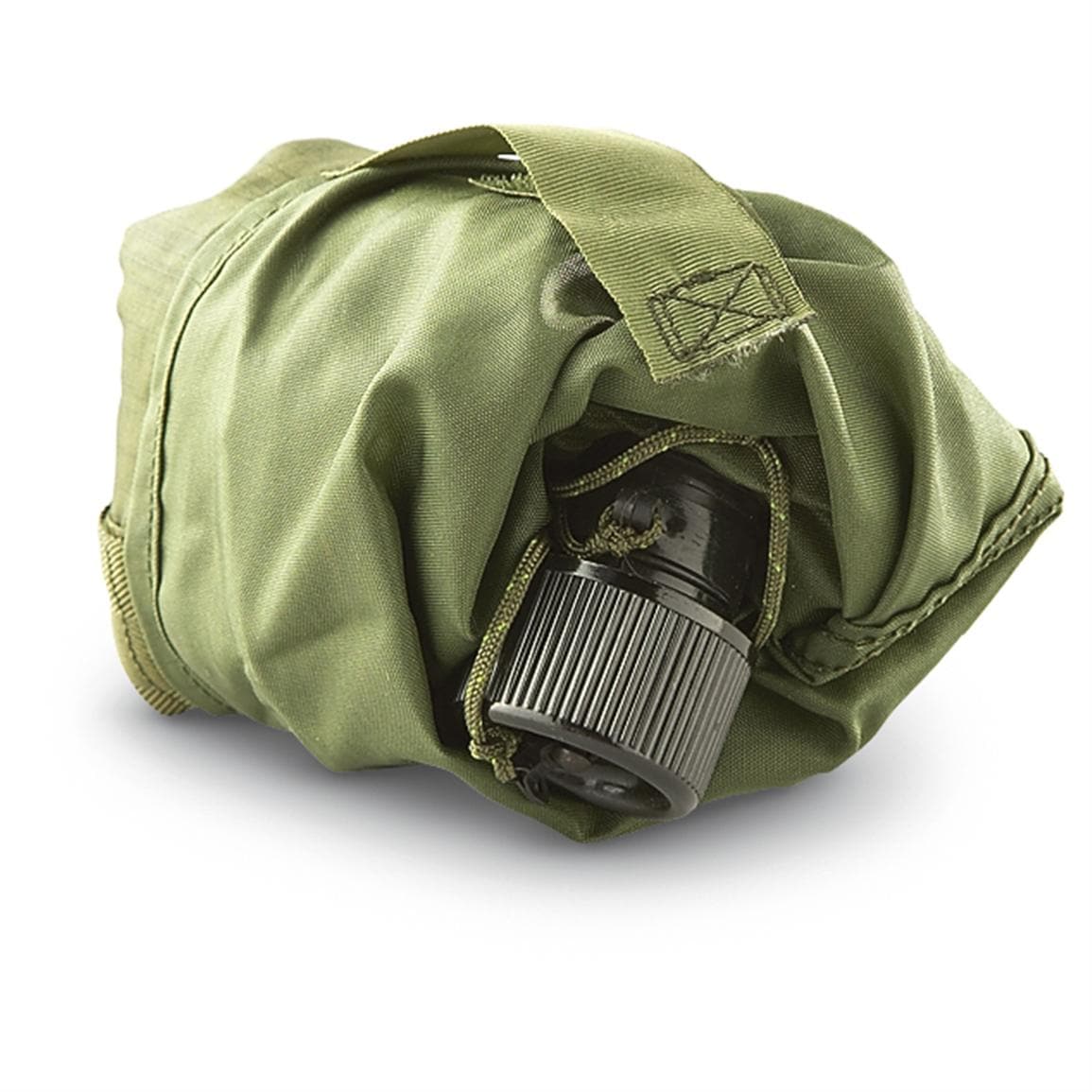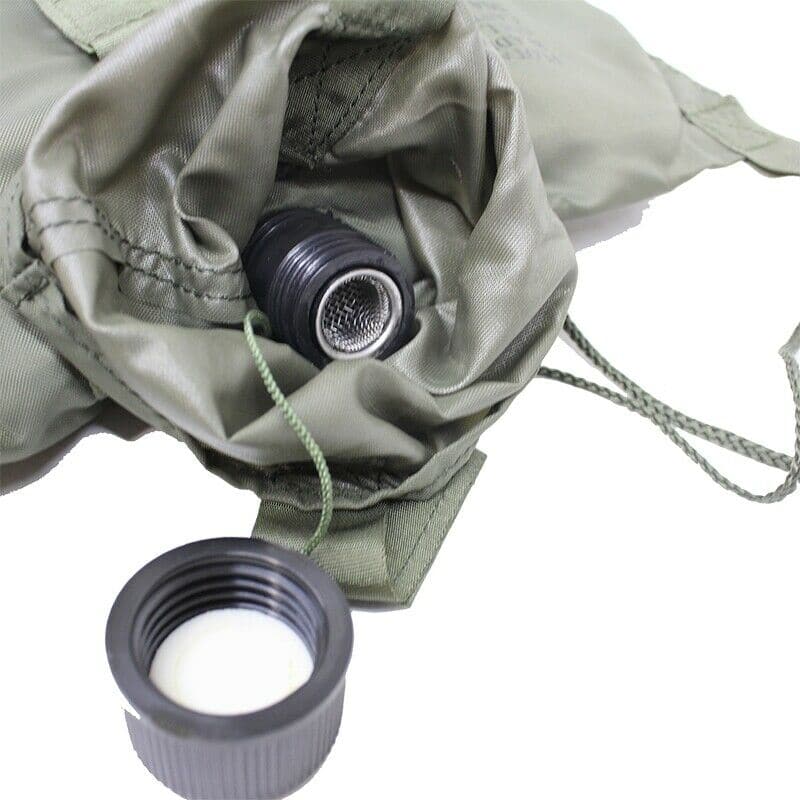The First Camelbak ?
The hot, wet, jungle conditions in the Vietnam War generated requirements for new equipment. One example was the five quart canteen that was produced starting in 1968. It served as a large capacity canteen or could be inflated with air for use as a flotation device.River crossing device,even a pillow!
Approx 5L capacity
New
Historic Background to the 5 Qt.
The five quart canteen was fielded in Vietnam in 1968. It was made of all soft materials so that as water was withdrawn, it would collapse and hold the remaining water without sloshing sounds. This requirement to be tactically quiet was one of the main objectives for the 5-quart canteen and its smaller sibling, the First Pattern Two Quart Collapsible Canteen.
Water was held in a transparent vinyl-film bladder (five quart capacity) with a nylon cover to contain the bladder. The size was approximately 13.5 by 10.5 inches, much larger than the otherwise similar First Pattern Two Quart Collapsible Canteen. The neck of the bladder was rigid plastic, with a top-center M1942 black resin plastic screw-on cap, The top edge of the bladder included an area of thicker reinforcing plastic around the neck. Early production had a chain to retain the cap while later a nylon cord was provided.
The OD106 nylon cover had nylon tape loops and string ties sewn in at each corner, making it easy to secure the 5-quart canteen to a rucksack, packboard, vehicle or other attachment point. A snap opening at the side was provided to insert or remove the bladder. A folding fabric funnel at the top was used when filling the canteen. A pocket for water purification tablets (with velcro closure) was available on the outside of the cover.
In addition to its use as a 5-quart canteen, the design anticipated its use as a flotation bladder that would support the weight of a soldier and his equipment. It could also be used as a pillow. Use for flotation was dropped from the instructions by the time the later model appeared, after the conclusion of the war in Vietnam.
The front and back of the early model nylon cover had extensive printed instructions and diagrams regarding filling, purification procedures, and use for flotation. The later model had US on the front, near the neck, and a single large printed instruction label on the back.

